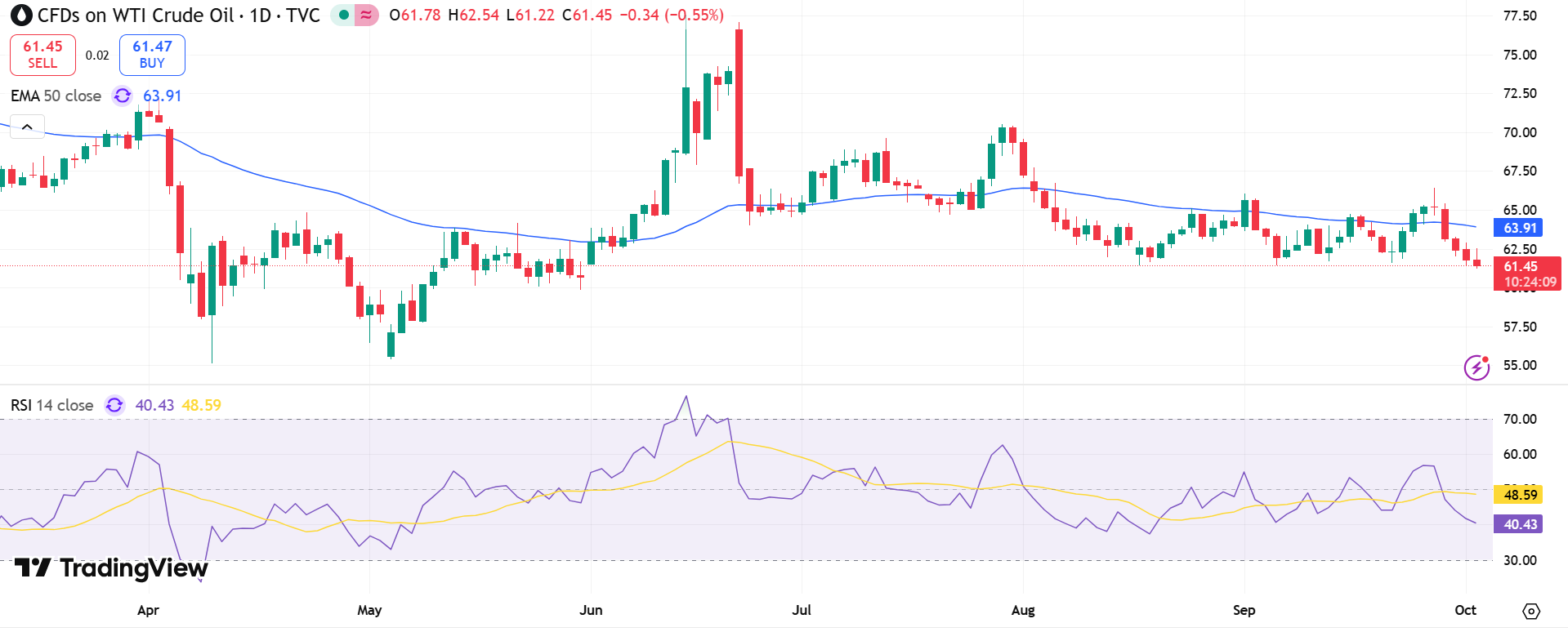Oil prices rebounded modestly on Thursday, breaking a three-day losing streak as geopolitical tensions revived concerns about potential disruptions to Russian crude exports.
- Brent crude: $65.49 per barrel (+0.2%)
- WTI crude: $61.92 per barrel (+0.2%)
Traders noted that Brent and WTI had slipped earlier in the week on oversupply worries, but renewed buying interest emerged as West Texas Intermediate approached its $60 support level. Giovanni Staunovo, commodity analyst at UBS, said, “The market is sensitive to Russian supply risks, though without concrete disruptions, price movements remain contained.”
The Group of Seven finance ministers pledged Wednesday to tighten pressure on Russia, particularly targeting buyers and facilitators of its crude. Analysts suggest tougher sanctions could elevate supply risks, underpinning oil prices in the near term.
Geopolitics Add to Market Volatility
Geopolitical risks resurfaced after U.S. officials confirmed plans to provide Ukraine with intelligence support for long-range strikes on Russian energy assets. Such measures could threaten refineries, pipelines, and export hubs, amplifying concerns over Kremlin revenue streams.
Meanwhile, China, the world’s largest oil importer, continued to stockpile crude, adding a layer of demand resilience that helped limit downside pressures. However, other economic signals weighed on investor confidence. The ongoing U.S. government shutdown has heightened fears of global growth slowdown, while expectations of higher production from OPEC+ capped bullish momentum.
Other key drivers include:
- OPEC+ talks: Proposal to raise output by up to 500,000 barrels/day in November.
- Market share push: Saudi Arabia reportedly pressing for larger output hikes to regain influence.
- Supply build: U.S. crude inventories rose by 1.8 million barrels last week, exceeding forecasts of a 1-million-barrel increase.
Oversupply Concerns Cap Gains

Despite Thursday’s modest rebound, oil remains under pressure from supply-side dynamics. Analysts at Onyx Capital Group noted that earlier declines were driven by fears of a market glut, though recent price stability suggests traders doubt the oversupply will be as severe as anticipated.
The U.S. Energy Information Administration’s latest report highlighted rising inventories of crude, gasoline, and distillates, reflecting softer refining activity and weaker demand. Crude stocks climbed to 416.5 million barrels for the week ending September 26, signaling ample supply despite geopolitical headwinds.
For now, investors remain caught between conflicting forces: supply risks tied to Russia and Ukraine, resilient Chinese demand, and the likelihood of increased OPEC+ production. The balance between these pressures will determine whether oil sustains its current rebound or resumes its decline.


